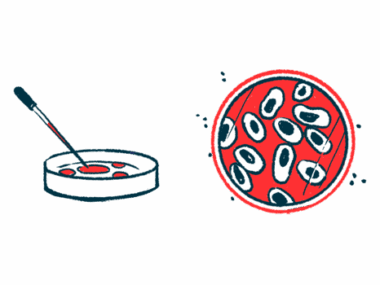Nonclumping forms of mHTT drive early Huntington’s: Preclinical study
Protein's soluble forms caused changes in neurons producing them
Written by |

Forms of mutant huntingtin (mHTT) protein that don’t clump initially drive early disease progression in people with Huntington’s disease, according to a study wherein patient-derived cells were transplanted into newborn mice.
These soluble forms of mHTT were found to cause structural changes in the neurons producing them and to be transmitted to neighboring healthy neurons through tiny vesicles, causing them to die.
“These findings will provide a novel conceptual framework for the development of effective therapeutic strategies,” the researchers wrote in “Soluble mutant huntingtin drives early human pathogenesis in Huntington’s disease,” which was published in Cellular and Molecular Life Sciences.
Huntington’s disease is marked by the loss of striatal neurons, nerve cells in a brain region called the striatum. Such neuronal loss results in symptoms that include uncontrolled jerking movements, known as chorea, walking difficulties, and problems with speech and swallowing.
The neurodegenerative disorder is caused by mutations in the HTT gene, which leads to an abnormally long and incorrectly folding mHTT protein being produced that’s more prone to clumping. This can be toxic to neurons.
“Development of more effective therapies for neurodegenerative diseases requires a better understanding of which are the most toxic protein species, when and where they accumulate, and how they spread throughout the brain,” wrote researchers in Spain who transplanted Huntington’s patient-derived nerve cell precursors, called neural progenitor cells (NPCs), into the developing striatum of newborn mice to examine what happens in the early stages of Huntington’s-related striatal damage in a living animal.
Signs of striatal degeneration
Initial experiments confirmed that NPCs derived from healthy people who were used as controls grew and transformed into mature neurons over a few months. Most of these were medium spiny neurons (MSNs), which make up about 95% of neurons in the human striatum.
An imaging analysis showed these implanted human neurons grew nerve fibers, or axons, which established connections with mouse striatal neurons via synapses — the junctions between neurons through which they communicate.
Newborn mice implanted with patient-derived NPCs, however, showed signs of striatal degeneration from one month onward, including the loss of MSNs that grew from patient NPCs. Mouse MSNs near those derived from patients also showed signs of damage.
Progressive structural changes within patient-derived neurons were also evident. These included alterations to the membrane of the nucleus, where all genetic information is stored, and abnormally large mitochondria, the cells’ powerhouses. Modifications to the endoplasmic reticulum, a cellular structure involved in the production, processing, and quality control of proteins and fatty molecules, were also detected.
“These remarkable alterations observed at the striatal level correlated with the presence of [abnormal] axons,” the researchers wrote.
Nonclumping mHTT protein
At the molecular level, a soluble, nonclumping form of mHTT was detected within patient-derived MSNs before overt neurodegeneration. Soluble mHTT interacted mainly with mitochondria and the endoplasmic reticulum, and with the nucleus and its membrane. Soluble mHTT was also detected in axons and areas close to synapses.
During neurodegeneration, insoluble mHTT clumps were only detected in a small population of patient-derived cells. Larger aggregates comprised only 9% of the total clumping forms of mHTT, while small clumps were “much more abundant,” the researchers wrote. The location of these smaller aggregates within cells was consistent with that of soluble forms.
Researchers then discovered that before and during overt neurodegeneration, neurons derived from Huntington’s patients secreted toxic soluble mHTT via extracellular vesicles, tiny membrane-bound sacs that shuttle various molecules between cells.
Experiments in which patient-derived NPCs were grown in a lab dish with mouse striatal neurons showed that vesicles carrying soluble mHTT, but not mHTT aggregates, were taken up by neighboring mouse MSNs and interacted with mouse mitochondria.
The findings suggested patient-derived neurons “secrete [extracellular vesicules] carrying soluble mHTT [forms], which can be internalized by mouse MSNs progressively seeding [disease-related damage] and triggering cell death,” the scientists wrote.
Mice transplanted with patient-derived NPCs were given the approved multiple sclerosis therapy fingolimod (sold as Gilenya and with generics available), which is known to block extracellular vesicle formation.
The treatment significantly reduced cell death spreading in surrounding mouse neurons, but not in the bulk of transplanted patient-derived neurons, “suggesting that treatment was specifically targeting mHTT spreading,” said the researchers, who noted the findings “highlight the preponderant role of soluble mHTT as a trigger for neurodegeneration.”
“We conclude that interaction of mHTT soluble forms with key cellular organelles initially drives disease progression in [Huntington’s disease] patients, and their transmission through exosomes contributes to spread the disease,” they wrote.






